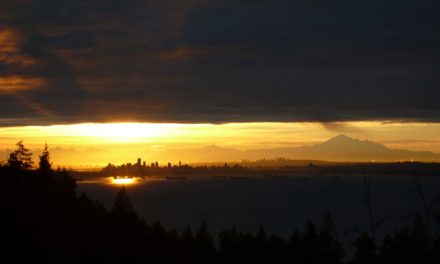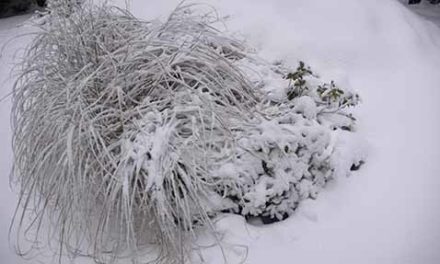Something to keep in mind…
Climate Change is not an abstract concept – it is about people, water, food, energy, and infrastructure…
This is dedicated to the people who suffered through Hurricane Michael…
Hurricane Michael rapidly grew to a Category Four hurricane with 155 mph winds. It needed only one mph more to become a Category Five. This was not that surprising given the available heat in the Gulf of Mexico. That same Gulf heat strengthened Harvey into a Category Three and Katrina breifly to a Category Five at one point before it hit land.
What was surprising is that Michael’s eye wall held once it hit land. And that it continued to be a tropical storm almost all the way up to Boston. Because the jet stream has a much higher amplitude now due to warming at the equator, storms follow a more north to south path rather than moving quickly eastwards. The extra heat causes the storms to be larger and hold more water. The south to north path means that they remain longer in one location. As Michael moved northwards it collided with a cold front moving in from the west which caused enormous amounts of water to be dumped on Georgia and the Carolinas.
The potential dangers of Climate Breakdown (Climate Change) have been known.
It is shocking that governmental agencies like the military knew about Climate Breakdown (Climate Change), but individual people were not warned years ago.
In May of 2009 Rear Admiral David Titley was tasked with understanding Climate Breakdown (Climate Change) for the US Navy. The Navy has over 100 international ports and controls over 285 deployable ships. It was clear as early as 2009 that their infrastructure would be affected by sea-level rise and super storms. Titley is now a professor at Penn State and continues to actively speak out about Climate Breakdown (Climate Change). He is both an oceanographer and a meteorologist. Even though he is mainstream and conservative he understands, with lots of caveats, that we are in great danger of sea-level rise. He said in 2017…
There is reasonably credible evidence, with big uncertainties, to say that we are really getting close to where the East Antarctic ice sheet just lets go. How do you keep sea-level rise at one, two or three meters, as opposed to nine, ten, fifteen meters?
What people can tell you is that we seem to be getting really close to locking in much greater sea-level rise than the mainstream science talks about.
Why are people not being told about the consequences of Climate Breakdown (Climate Change)?
How far does Climate Breakdown have to go before enough people understand what is happening?
How long before enough people revolt, not in the sense of an armed insurrection, but in a sea change that demands immediate action?
In the past people have revolted when they and their families are personally challenged by famine, by inflation, by lack of safe and adequate housing. But this challenge is not tangible except to some of the people who have been directly affected by recent hurricanes, floods, droughts and fires.
The current power structure diverts and distracts the masses by any means possible. There is no mention of the consequences of Climate Breakdown facing populations in low lying areas. Governments channel people’s discontent into nationalism, racism, misogyny and war. Hitler’s Germany is a good example of a fascist response to crisis. Instead of economic reform they went to war.
As our climate system breaks down, more and more extreme factors will cause people to be personally challenged by displacement, drought, flooding, famine, lack of water, and high temperatures. Any of these events could exacerbate a revolt if and when a situation becomes intolerable.
Without doubt the current power brokers – our government, the military, and the multinational corporations expect Climate Breakdown, and they are actively planning to profit from the changes. Investment in sea-wall construction and in hotels for people displaced by hurricanes is already happening.
There exists the possibility, that if and only if, enough people wake up to the current Climate Breakdown, they could demand that governments, corporations, and other institutions make an all-out effort NOW to avoid the drastic outcomes of significant temperature rise over the next 10 to 20 years.
The choice is to revolt now (with the system), or later (against the system).
The key is that ALL the people, must be privy to the same facts that our governments, the military, and corporations already know (and have known for a long time) but are keeping from the public.
The desire to head-off these disasters must come from the people, not the system, because the system, as currently constituted in the US, other nations, and multinational corporations, has determined that change should be managed and profited from without any consideration for the public.
First people must become informed. If they do not know they will not demand change. Therefore, people must understand that Climate Breakdown is real, is imminent, and is already in process.
Follow the money Billionaires Are the Leading Cause of Climate Change
CQ October 11, 2018
your individual choices are probably doing very little to the world’s climate. The real impact comes on the industrial level, as more than 70 percent of global emissions come from just 100 companies. So you, a random American consumer, exert very little pressure here. The people who are actively cranking up the global thermostat and threatening to drown 20 percent of the global population are the billionaires in the boardrooms of these companies.
…
In her book, Mayer notes that “ju8igKoch Industries alone routinely released some 24 million tons of carbon dioxide into the atmosphere a year.”
…
PayPal cofounder Peter Thiel, for example, used to donate to the Seasteading Institute, which aimed to build floating cities in order to counteract rising sea levels. And Exxon Mobil allegedly knew about climate change in 1977, back when it was still just Exxon and about 11 years before climate change became widely talked about. Instead of acting on it, they started a decades-long misinformation campaign. According to Scientific American, Exxon helped create the Global Climate Coalition, which questioned the scientific basis for concern over climate change from the late ’80s until 2002
…
Not only is the oil and gas industry experiencing a serious boom right now, companies know that the only real solutions to climate change will hurt them even more than a measly tax.
…
According to Bloomberg, investors are looking to make money off of everything from revamped food production to hotels for people fleeing increasingly hurricane-ravaged areas. A top JP Morgan Asset investment strategist advised clients that sea-level rise was so inevitable that there was likely a lot of opportunity for investing in sea-wall construction.
Climate Change Will Get Worse. These Investors Are Betting on It
Bloomberg Businessweek October 8, 2018
“A storm surge barrier system protecting New York City and parts of New Jersey could cost $2.7 million per meter,” Michael Cembalest, the asset manager’s chairman of market and investment strategy, wrote in his annual “Eye on the Market” energy newsletter in April. He added that governments would probably struggle to pay that cost, perhaps turning to either bonds or outright privatization.
…
So Hinze bought [hotels] low—first in Houston, and then, as Hurricane Irma followed a week later, in South Florida. “We saw occupancy go to 100 percent in a lot of those hotels,” Hinze says. “We didn’t crush it. But we made 25 percent, 30 percent, pretty quick.”
…
I would love to give up these investment opportunities in a second if people would listen and stop polluting the environment,” Vogel says. In the meantime, he says, investors can be a societal warning system, alerting the public to a risk it has otherwise been reluctant to see. “If people are making money off it, that gets attention.
HOT AIR NEWS ROUNDUP
General Climate Change News
Huge Iceberg Poised to Break Off Antarctica’s Pine Island Glacier
Live Science October 9, 2018
The rift only has about another 6 miles (10 km) to go before one or more icebergs calf, breaking off from the glacier, Lhermitte said. Another such event happened a mere year ago in 2017, when an iceberg 4.5 times the size of Manhattan broke off Pine Island Glacier.
UN Says Climate Genocide Is Coming. It’s Actually Worse Than That.
NY Mag October 10, 2018
Barring the arrival of dramatic new carbon-sucking technologies, which are so far from scalability at present that they are best described as fantasies of industrial absolution, it will not be possible to keep warming below two degrees Celsius — the level the new report describes as a climate catastrophe. As a planet, we are coursing along a trajectory that brings us north of four degrees by the end of the century.
…
Because the numbers are so small, we tend to trivialize the differences between one degree and two, two degrees and four.
…
At three degrees, southern Europe will be in permanent drought. The average drought in Central America would last 19 months and in the Caribbean 21 months.
In northern Africa, the figure is 60 months — five years. The areas burned each year by wildfires would double in the Mediterranean and sextuple in the United States. Beyond the sea-level rise, which will already be swallowing cities from Miami Beach to Jakarta, damages just from river flooding will grow 30-fold in Bangladesh, 20-fold in India, and as much as 60-fold in the U.K.
What’s Another Way to Say ‘We’re F-cked’?
Rolling Stone October 12, 2018
Let’s pause to think about what 15-to-20 feet of sea-level rise in the next 70 or so years looks like. I’ll put it bluntly: It means not just higher storm surges from hurricanes, but the permanent drowning of virtually every major coastal city in the world. Miami, New Orleans, large parts of Boston and New York City and Silicon Valley, not to mention Shanghai, Jakarta, Ho Chi Min City, Lagos, Mumbai — all gone. And I don’t mean “sunny day flooding,” where you get your feet wet on the way to the mall. I mean these cities, and many more, become scuba diving sites.
…
For Alley, the engine of potential catastrophe is West Antarctica. The details are complex, but here’s a short version of what’s happening: warm water from the Southern Ocean is melting the underside of big glaciers like Thwaites and Pine Island, which, due to the unusual terrain there, have the potential to collapse quickly. (I wrote a much longer, more detailed account of the mechanics of ice sheet collapse here). If West Antarctica goes, that’s 10 feet of sea-level rise right there. Then if you add in ice loss from Greenland, a little from East Antarctica and other sources, you quickly get to 15 to 20 feet.
Climate Adaption
Ambitious plan for seven London-sized forests to meet UK climate goals
New Scientist October 2018
Planting forests covering 1.2 million hectares – equivalent to the more than seven times the area of Greater London – should be an immediate priority if the UK is to achieve zero net emissions of carbon dioxide by 2050. That’s the key recommendation of a joint report by the UK Royal Society and the Royal Academy of Engineering.
Bill Gates launches effort to help the world adapt to climate change
National Geographic October 10, 2018
A new international effort hopes to help farmers—and everyone else—adapt to climate change. Switching from raising chickens to ducks is one solution in a growing toolbox.
…
In Bangladesh, low-lying and vulnerable to yearly flooding, farmers are shifting from raising chickens to raising ducks. Ducks can swim.
Missouri Farms Hold Big Potential as Carbon Storehouse
Climate Central July 18, 2018
These more frequent heavy rains and subsequent floods, along with increases in extreme heat and drought, contribute to eroding the very foundation agriculture relies upon — the soil.
But through conservation farming practices, Missourians are finding ways to battle erosion and benefit the soil. Many of these practices have an added bonus of sucking carbon dioxide — the gas that’s helping fuel the weather extremes — from the atmosphere and then storing the carbon in the soil.
HSBC leads green bonanza with £250m renewables pledge
The Telegraph October 12, 2018
HSBC is leading a wave of British institutions from the City to the High Street which plan to pour hundreds of millions of pounds into cutting greenhouse gas emissions. The banking giant unveiled plans to invest around £250m in wind and solar power parks,
Wildlife & the Environment
Yes, Climate Breakdown is delaying the onset of fall color… Will Global Climate Change Affect Fall Colors?
Appalachian State U, October 2, 2108
I received a note from the NC Climate Office and they say that in Sep we have had minimum temperatures averaging about 7F above normal, and max temperatures above normal, although not by that much. Washington, DC has had its rainiest and near warmest Sep in history. All of these factors combine to delay the onset of fall leaf color.
Here is another older article on fall colors. Long and interesting…
Will Global Climate Change Affect Fall Colors?
how could global climate change affect fall color? To paraphrase the Bard, let me count the ways: (1) higher temperatures, (2) altered timing and/or amounts of precipitation, (3) changes in humidity, (4) changes in cloud cover and light striking the trees, (5) increases in the length of the growing season and displacement of the timing of leaf out and leaf fall, (6) higher levels of nitrogen inputs to ecosystems from agricultural practices such as fertilizing and hog production, (7) acidic deposition that causes nutrients to leach out of the soil, (8) migration of trees farther north to escape the heat, (9) extirpation of trees that can’t migrate for one reason or another, and finally, (10) changes in competition due to greater pest loads or invasive exotic species.
Hurricane’s lessons add pressure for solution to Dominion coal-ash storage
Richmond Times October 9, 2018
The fresh memory of Hurricane Florence is adding urgency to a slow-moving legislative effort to resolve public concern about millions of cubic yards of coal ash stored next to rivers at power plant sites in Virginia.
Recent Climate Change Studies
Oceans are changing: New understanding of acidification in Southern Ocean
Science Daily October 9, 2018
of these cold temperatures and deep mixing, the carbon dioxide absorbed at the water’s surface can be quickly transferred to and stored in the deep regions of the Southern Ocean, unlike most lower latitude oceans where huge temperature differences prevent the surface water and the deep ocean from mixing.
As atmospheric carbon dioxide levels continue to increase, however, surface waters in the Southern Ocean are expected to become increasingly vulnerable to ocean acidification.
Arctic Sea Ice Decline Driving Ocean Phytoplankton Farther North
EOS October 15, 2018
A new study reveals phytoplankton spring blooms in the Arctic Ocean, which were previously nonexistent, are expanding northward at a rate of 1 degree of latitude per decade.
Very interesting article with good images…
Alaska’s 2018 early fall extremes
NOAA October 15, 2018
The North Pacific Ocean is warm—really warm—at least compared to normal. September temperatures in Alaska tired for fourth warmest in the past 94 years according to NCEI analysis … Extreme warmth isn’t the only unusual climate news from Alaska this fall. The coastal forests in the Southeast are experiencing a very unusual drought. Temperate rainforest covers much of Southeast Alaska, where annual rainfall exceeds 100 inches a year in many places, even near sea level.
Climate models fail to simulate recent air-pressure changes over Greenland
Phys Org October 16, 2018
Researchers warn that record wet summers in England and Wales such as those experienced in 2007 and 2012 could become more frequent if Greenland air pressure continues to strengthen over the next few decades, but such a trend might not be predicted due to inaccurate regional climate simulations.
…
Also concluded that current models of melting on the Greenland Ice Sheet—a vast body of ice which covers more than 80 per cent of the surface of Greenland—may significantly underestimate the global sea-level rise expected by 2100.
With thick ice gone, Arctic sea ice changes more slowly
NASA October 11, 2018
With so little thick, old ice left, the rate of decrease in ice thickness has slowed. New ice grows faster but is more vulnerable to weather and wind, so ice thickness is now more variable, rather than dominated by the effect of global warming.
…
More than 70 percent of Arctic sea ice is now seasonal, which means it grows in the winter and melts in the summer, but doesn’t last from year to year. This seasonal ice melts faster and breaks up easier, making it much more susceptible to wind and atmospheric conditions.
…
“The thickness and coverage in the Arctic are now dominated by the growth, melting and deformation of seasonal ice.”
Global Warnings
Paul Beckwith: “I declare a global climate change emergency to claw back up the rock face to attempt to regain system stability, or face an untenable calamity of biblical proportions.”
Kevin Hester: “There is no past analogue for the rapidity of what we are baring witness to. There has been a flood of articles … 2C is no longer attainable and that we are heading for dangerous climate change”
Guy McPherson: “The recent and near-future rises in temperature are occurring and will occur at least an order of magnitude faster than the worst of all prior Mass Extinctions. Habitat for human animals is disappearing throughout the world, and abrupt climate change has barely begun.”
Magi Amma… We need to turn on a dime at mach nine! Enjoy!





